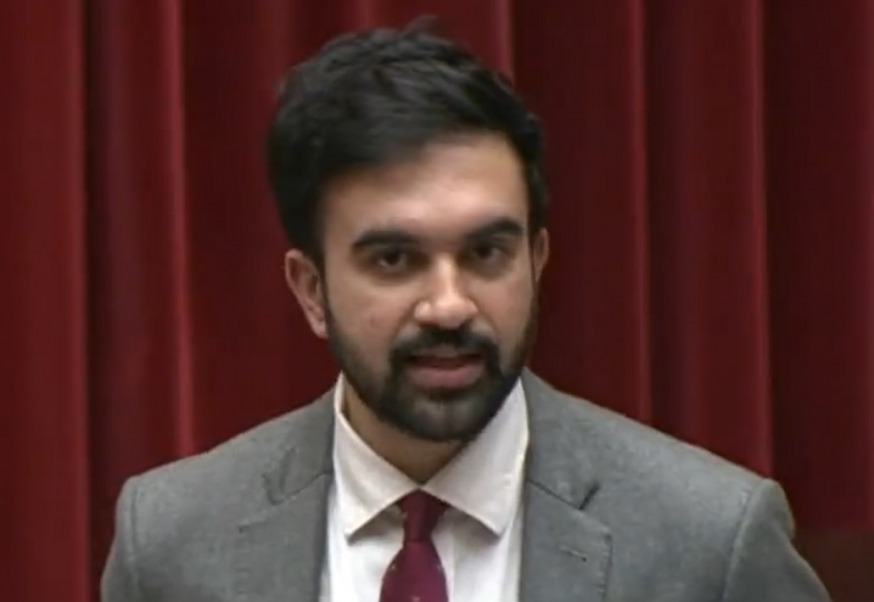
Assembly Member Zohran Momdani (twitter) who represents the 36th District. Forty-five percent of his current district has been moved elsewhere through redistricting
Feb. 16, 2022 By Christian Murray
When the state legislature voted to pass the new district maps earlier this month there was only one representative from Queens who voted against them—Assembly Member Zohran Mamdani.
Mamdani, a Democratic Socialist who represents the 36th Assembly District in Astoria, was the only elected official in either the state Senate or Assembly from Queens to vote in opposition to the new maps. In fact, he was only one of two Democrats in Albany to oppose them—with the other being Assemblywoman Yuh-Line Niou of Manhattan.
Mamdani’s district underwent significant change when the maps were redrawn. The left-leaning assemblymember lost 45 percent of what is his current district, arguably picking up areas where more moderate Democratic voters reside.
Most of the Ditmars/Steinway area has been moved from Mamdani’s 36th district to Jessica González-Rojas’ 34th district. Meanwhile, the district will now include vast new areas—such as the three NYCHA developments– Astoria Houses, Queensbridge and Ravenswood– as well as the Court Square and Queens Plaza sections of Long Island City.
Mamdani said he was surprised by the magnitude of the change—and expressed disappointment that he will lose many constituents that he has developed relationships with.
However, he said, his vote against the new maps was primarily due to the lack of a unified assembly district for the South Asian community in eastern Queens. He had advocated for a unified district for South Asians that included the neighborhoods of Richmond Hill and South Ozone Park.
On Thurs, I voted NO on the new maps for our state leg
As the first South Asian man elected to the Assembly, I have a duty to my community
These maps dissect the South Asian enclaves of Richmond Hill & South Ozone park into 3 districts, shutting South Asians out in the process pic.twitter.com/hzhIQG7jaA
— Zohran Kwame Mamdani (@ZohranKMamdani) February 7, 2022
“I have mixed feelings as to what this does to my district,” Mamdani said on the Assembly floor earlier this month.
“On one hand I lose 45 percent of my existing district, while on the other hand it unites my district with public development housing…I am now very proud to now represent Astoria Houses, Ravenswood and Queensbridge.”
But he took issue with the fact that the areas of Richmond Hill and South Ozone Park remain split into multiple assembly districts—thereby diluting the voice of the South Asian community in those neighborhoods.
“While it is an improvement on the existing maps to go from seven different splits of Richmond Hill and South Ozone Park to three… Three is simply not good enough…They deserve to be in a united assembly district,” he told the Assembly.
Mamdani noted that he is the first South Asian man elected to the Assembly and he has a responsibility to look out for the interests of those communities.
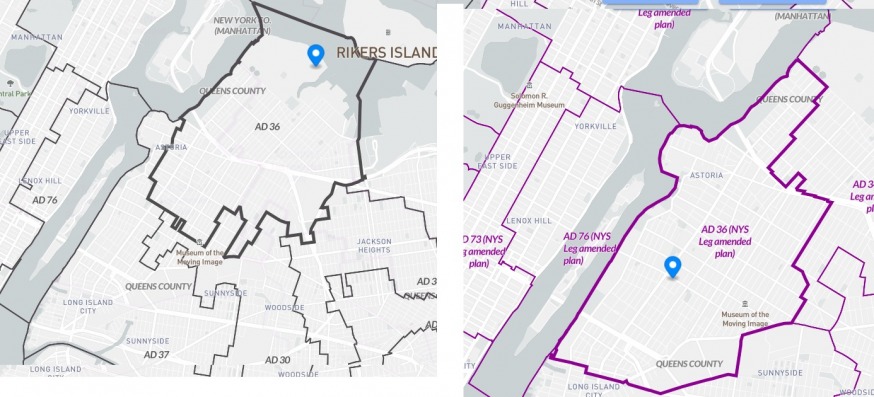
The current Assembly District 36 map (left) vs. the new map. Approximately 45 percent of the current district has been moved elsewhere (Source: RedistrictingandYou.org)
Major Change to the 36th District Map
Mamdani said that he didn’t expect his district to undergo such a big change.
“I thought that the changes would be largely cosmetic,” he said, surprised that 45 percent of his district would vanish.
Some political pundits argue that the new maps will make it harder for Mamdani to keep his Assembly seat—something Mamdani disagrees with.
He will lose some progressive voters, observers say, while gaining constituents who are more likely to be moderate. NYCHA residents, for instance, tend to vote for moderate Democrats.
Mamdani, who has butted heads with some of his fellow Democrats since taking office in January 2021, does not believe that the district was changed by party officials to undermine him. However, he recognizes that there are many factors in play when new maps are drawn.
“I’m sure there are some of my colleagues who have taken issue with my politics and the way in which I practice them,” Mamdani said. “But I don’t think that that was the motivating intent behind the drawing of these districts.”
He said the change to his district can be attributed to several factors, such as the creation of a predominantly Asian assembly seat on his southeast border. “There was a shift in the [assembly] borders for that…and there were knock on effects.”
Mamdani, who beat Aravella Simotas in the 2020 Democratic primary by approximately 400 votes, said that he does not feel vulnerable despite the new electoral lines.
“For those who think this is the death knell for me representing this neighborhood they will be sorely disappointed.”
So far, no one has announced that they plan to challenge him in the June 28 primary.
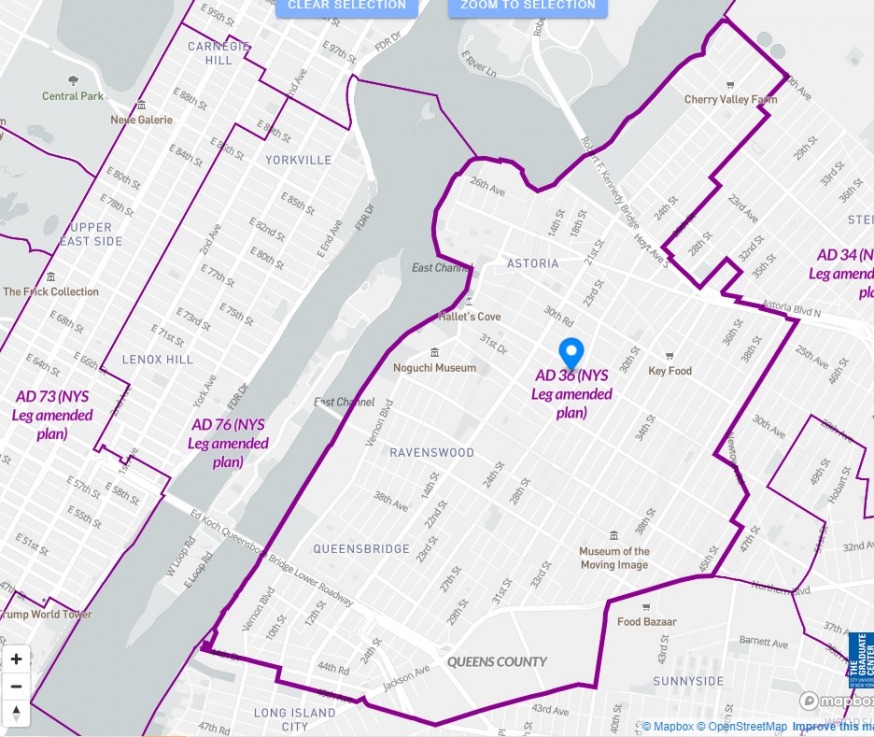
The areas of Queens Plaza, Court Square, Queensbridge, Ravenswood and Astoria Houses are now part of the map for District 36. They were previously part of District 37 (Source: RedistrictingandYou.org)
Mamdani said that he believes his politics will also connect with constituents in the newly drawn district.
“The struggles that we’ve been engaging in go beyond our neighborhoods…so they will be just as interested in partnering with me on the issues such as Good Cause Eviction, and passing the Public Renewable Act, and ensuring that we have a new deal for CUNY, because those are issues that affect every single New Yorker.”
“I also do believe that my politics will also connect with the residents of Queensbridge, Ravenswood and Astoria Houses because at its core, my politics are about ensuring that the state guarantees dignity to each and every one of its residents,” he said.
He also noted that there is tendency to incorrectly paint the political ideology of certain residents with a broad brush.
He said Astoria Houses was a good example. Tiffany Cabán, a Democratic Socialist, and Eric Adams, a moderate Democrat, both prevailed with voters at the NYCHA development last year.
Richmond Hills and South Ozone Park
Mamdani’s vote in opposition to the maps was largely in protest to the fact that Richmond Hill and South Ozone Park were not combined into one unified district.
He said that the South Asian communities of these two neighborhoods deserve to be part of one assembly district.
He said that the maps put together by the Independent Redistricting Commission—with significant public input during many hearings—unified the two neighborhoods.
The commission was tasked with creating new district lines throughout the state—although its members couldn’t come to a final agreement on how all the lines should be drawn. Two dueling maps were created—although both maps unified the two neighborhoods.
“The hours and hours of testimony that was provided in the public hearings, over the course of the independent redistricting commissions process of creating maps, all spoke to the fact that this is one community that deserves to be in one assembly district,” Mamdani said.
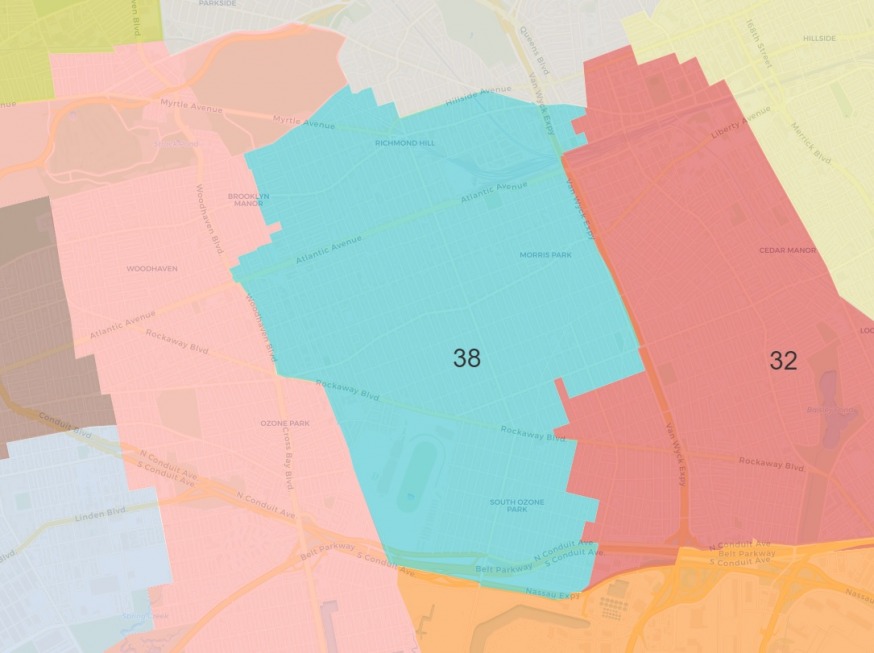
The maps put together by the Independent Redistricting Commission unify the neighborhoods of Richmond Hill and South Ozone Park into one assembly district (IRC)
He said the legislature, which rejected the maps put forward by the Independent Redistricting Commission, could have unified the areas when it drafted its own map. He noted that the borders of many districts underwent significant change.
“There’s a lot of latitude to move a district. Look what happened to my district.”
He said that politics played a role, noting that a unified area would have meant that six sitting assembly members would have lost those parts of their existing districts–and one member would have got the entire unified area. Some members, he said, may not have wanted to have lose that portion of their district.
Furthermore, he said, the assembly member who would have got to represent the unified area may not have wanted to forgo existing areas. The legislature decided to split the neighborhoods in three.
Mamdani said that the redistricting process is political since the legislature needs the votes for the maps to be approved. In the assembly, 100 of the 150 members have to be approve them in order for them to go into effect.
“The maps have to be drawn in a way that will get the necessary votes,” he said.
The Assembly voted 118 for the maps and 29 against. In the Senate, 43 of the 63 senators approved them.
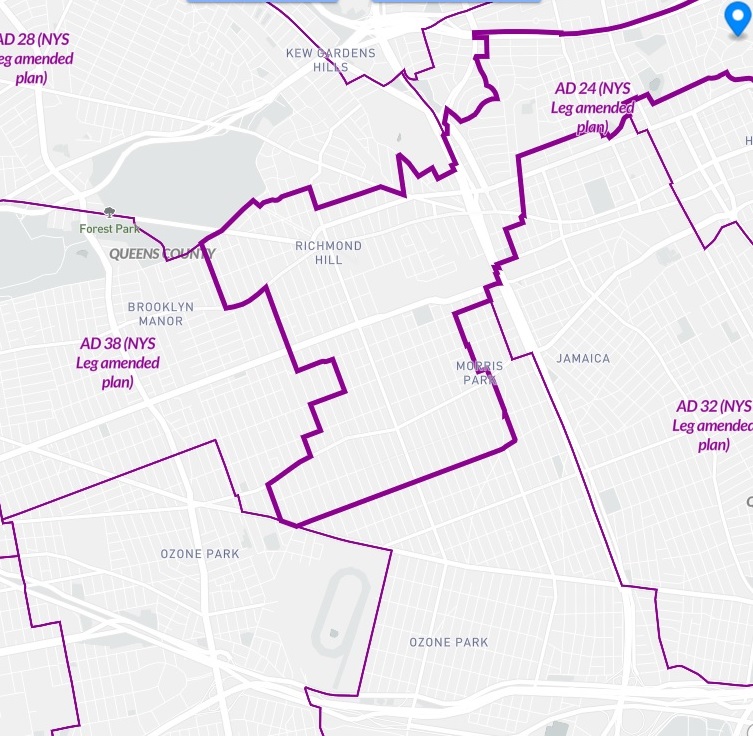
The maps put together by the state legislature split the Richmond Hill and South Ozone Park neighborhoods among three assembly districts (Source: RedistrictingandYou.org)






